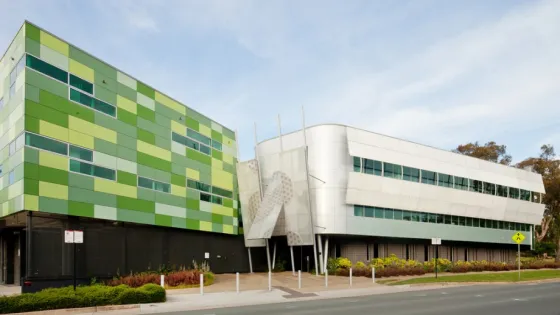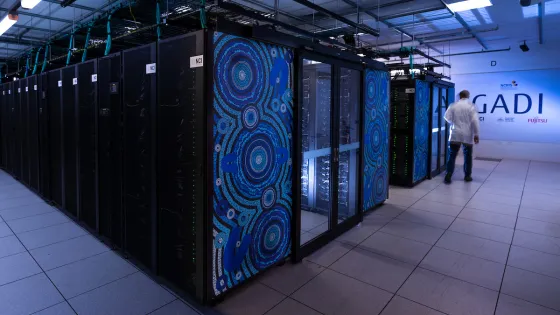Our expertise
The Shine-Dalgarno Centre for RNA Innovation can enrich and support all your RNA research needs through:
- Understanding the fundamentals of RNA biology
- Supporting the discovery of new RNA targets
- Developing new RNA tools
- Screening RNA biomarkers and new therapeutics
- Selecting and optimising RNA candidates
- Developing new computational tools
- Using pre-clinical models for RNA diagnostic and therapeutic validation
- Designing and implementing your RNA manufacturing needs
Novel RNA Therapeutics

We have developed a program of research around the use, delivery and editing of RNA molecules for the treatment of a range of conditions, including, but not limited to, cancer, autoimmunity and ophthalmology (including age-related macular degeneration). From using extracellular vesicles as delivery mechanisms for non-coding RNA molecules (including miRNA, circular RNA) to developing novel CRISPR-Cas enzymes for RNA editing and innovative small molecule RNA Polymerase I inhibitors, as a group we are advancing novel strategies of biomedical intervention. Drawing on the latest RNA discoveries, this program is set to build an innovative ecosystem where world-class RNA research and technology is targeted to currently untreatable healthcare challenges, independently of traditional disciplinary boundaries.
See the full list of projects.
RNA Sensor and Point of Care Diagnostics

We also have a molecular diagnostic research program centred around the detection of RNA molecules, biomarkers for diseases. Using CRISPR-Cas gene editing technologies and/or novel RNA biosensors, we are building the next generation of molecular diagnostic tools for point of care diagnostics and a research capability to diagnose and prevent diseases.
Computational capabilities

The Centre has developed computational tools that enable the identification and high-throughput measurement of RNA molecules using the latest technologies, including long-read sequencing, single cell sequencing, and spatial transcriptomics. Our Computational Biology research also develops Machine Learning approaches to uncover novel RNA therapeutics and diagnostic markers in cancer and other diseases.
Our facilities - Advance Research Infrastructures
One of the key cornerstones underpinning the Shine-Dalgarno Centre for RNA Innovation is access to an array of core facilities and research services to facilitate this work, which are co-localised in the medical research precinct at ANU. Each of these entities is associated with and/or supported by funds from the Australian Government National Collaborative Research Infrastructure Strategy (NCRIS), and given their close proximity, can facilitate testing and screening, through to data analysis and storage.
Biomolecular Resource Facility

The Biomolecular Resource Facility (BRF) is a sequencing technology hub with a strong focus on supporting RNA biology. The facility has a number of specialists to provide service on a fleet of short read and long read sequencing platforms, including the Illumina NovaSeq6000 and the Oxford Nanopore Technology PromethION. RNA services include RNA-seq, single cell RNA-seq with phenotypic feature barcoding, bisulfite RNA-seq, sequencing native RNA strands or long read mRNA transcripts. Find out more. @ANUbiomolecular
ANU Centre for Therapeutic Discovery

The ANU Centre for Therapeutic Discovery (ACTD) is a high-throughput screening facility which contains state-of-the-art robotic and liquid handling systems. The facility provides specialist service from assay design and development/optimisation, through to execution of high-throughput screens with a large variety of assay readouts available (e.g., biochemical assays through to high-content imaging and phenotypic screening). The ACTD supports screening of a variety of ‘perturbagens’, including genome-wide RNA interference and CRISPR knockout screening options, as well as the capacity to conduct small molecule and biologics screening. Find out more. @ANU_Therapeutic
The Australian Phenomics Facility

The Australian Phenomics Facility (APF) specialises in the development, characterisation, housing and archiving of mouse models of human disease. The APF has an experienced team of genomics and bioinformatics specialists that focuses on generating mouse models of disease and phenotypic characterisation of mouse strains. The APF is the home of the Australian Phenome Bank, a centralised repository of genetically modified mouse strains and strain information used in Medical Research in Australia. The APF also provides support with colony import/export and management, in vitro fertilisation and cryopreservation of strains, exome and whole genome sequencing service packages tailored specifically to the research application. Find out more.
Centre for Computational Biology

The John Curtin School of Medical Research is home to the Centre for Computational Biology (CCB), consisting of more than 30 researchers and technicians all closely collaborating across various experimental platforms. The Centre includes the ANU Bioinformatics Consultancy (ABC), which provides consultation and support across a wide range of bioinformatics requirements, from complex data analysis and management to experimental design to ensure statistical rigour. The ABC performs both custom scripting and analysis as well as pipeline development for bioinformatics, such as RNA expression analysis and single cell sequencing.
National Computational Infrastructure

Additionally, the CCB works closely with the National Computational Infrastructure (NCI), Australia’s leading high-performance data, storage and computing organisation, which provides expert services to all areas of science, government and industry. Through this collaboration between CCB and NCI, we are able to use these services for our high-end computational requirements across our research programs and core facilities. Find out more. @NCInews
